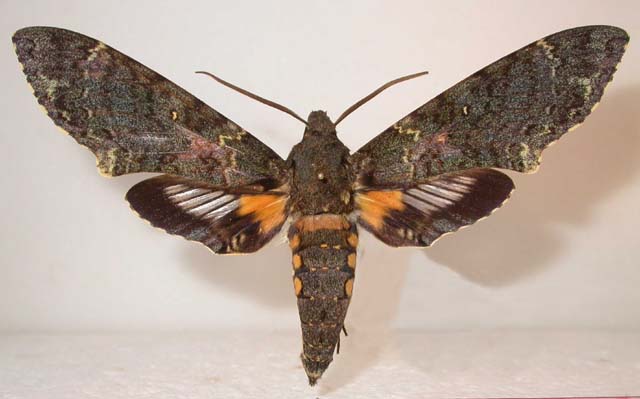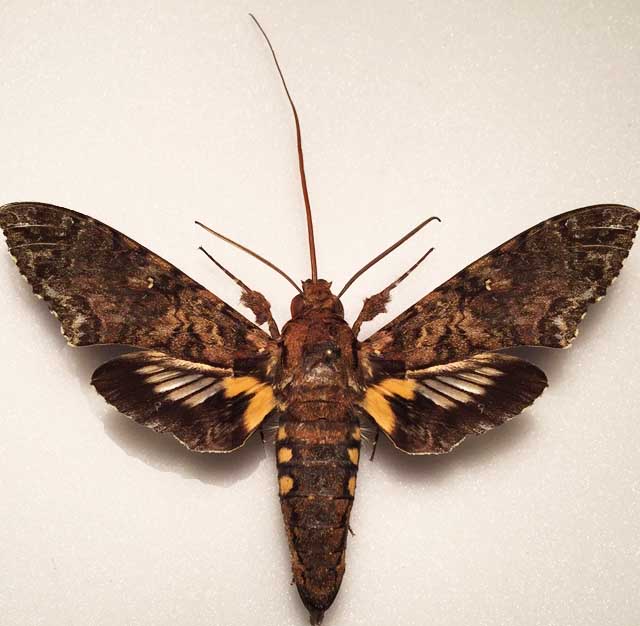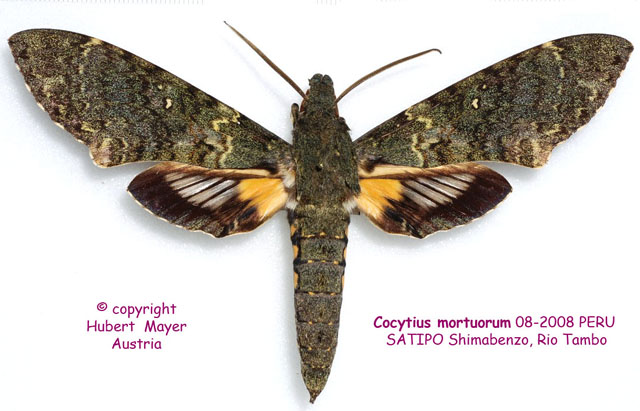Cocytius mortuorum
koh-SIT-ee-usMmor-chew-OR-um
Rothschild and Jordan, 1910

Cocytius mortuorum male, Peru, courtesy of Jean Haxaire

Cocytius mortuorum 111mm, Rando Frio, Darien NP, Darien, Panama,
March 3, 2019, 125m, courtesy of Galerita Janus, id by Bill Oehlke.
Comments, suggestions and/or additional information are welcomed by Bill.
TAXONOMY:
Family: Sphingidae, Latreille, 1802 |
